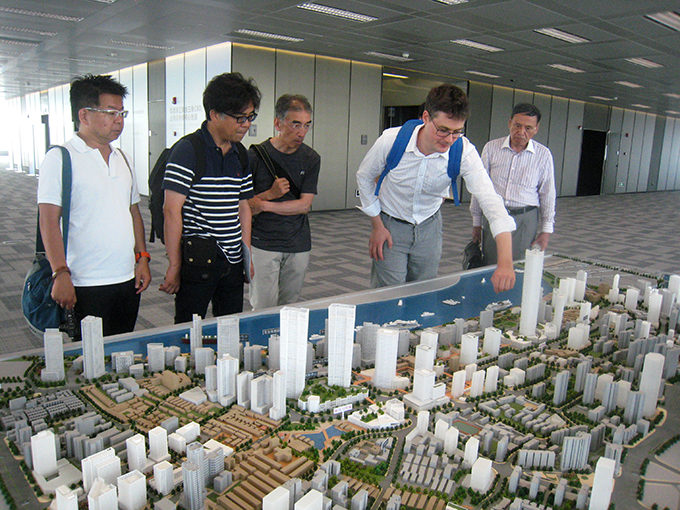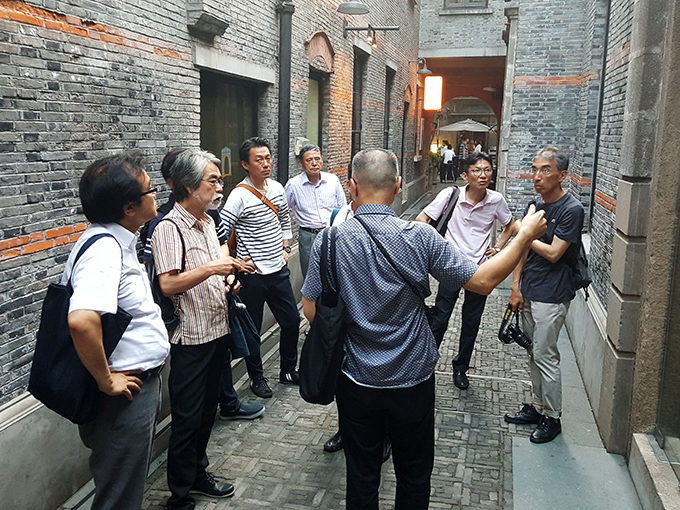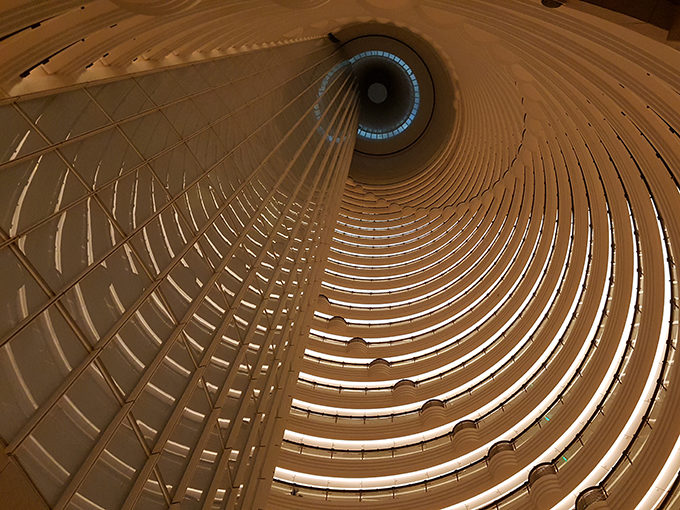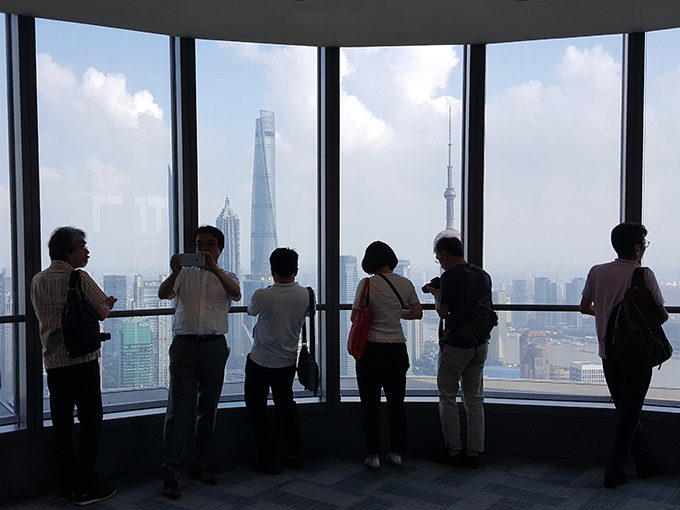



In July, 2017, SOM’s Shanghai office hosted a group of visiting architects from the Fukuoka chapter of the Japan Institute of Architects (JIA Fukuoka). The group’s trip to Shanghai was part of an exchange program organized by JIA Fukuoka and AIA Shanghai. The events, which took place on Friday, July 28th and Saturday, July 29th, included a tour of three SOM-designed projects in Shanghai led by Silas Chiow, Director of SOM China.
On July 28th, the JIA Fukuoka group visited SOM’s Shanghai office for a comparative discussion on current practices and recent historic trends in urban design in Fukuoka and Shanghai; both cities experienced significant development and growth in the 1980s and 1990s, due in large part to collaborative projects between their respective governments and various western architects. The groups discussed the current challenges and opportunities in each city. SOM Associate and Senior Urban Designer Ted Yu presented on several of the firm’s projects in Shanghai. Additionally, Yu discussed SOM’s approach to sustainable and responsible design in a city with a population of more than 24 million people.
The following day, Chiow and several of his colleagues led the visitors on a tour of three landmark projects designed by SOM: Jin Mao Tower, Xin Tian Di, and White Magnolia Plaza. Jin Mao Tower and Xin Tian Di were both completed in the 1990s, while White Magnolia Plaza is nearing completion. Offering insight on the projects, Chiow said, “At the time of design, they each embodied different symbolic meanings. While Jin Mao represented China’s entrance on the world stage with the international standard for business and economic achievements, Xin Tian Di showcased the potential of reusing buildings while recollecting on history and heritage as the city moved forward with rapid urban regeneration.” Furthermore, “With White Magnolia Plaza, SOM demonstrated the benefit of architecture and structural collaboration that can lead to high-performance buildings that match the city’s determined growth.”